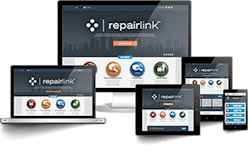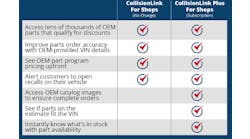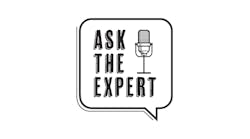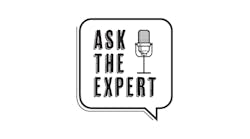With OEC celebrating its 20th anniversary this year, Ratchet+Wrench sat down with Bonnie Coleman, OEC director of mechanical & retail, to discuss where the industry has been, where it’s going and how RepairLink Shop is adapting to the advancing technology.
What is your background? How did you get to where you are now at OEC?
So my background is probably a little bit interesting, people are usually surprised. I've worked in television recruiting and now in software. But my background has always been more project and product management.
Before OEC, I had a job at Harley-Davidson—they have a software company here. I worked in the sales department, but I did some vendor management and installation. And then I found my way to OEC.
Since 2001, I’ve basically worked in software, working with dealers. That's what I really liked about finding OEC; I still get to work within a dealer network, providing them solutions to help them do their jobs better and more efficiently.
What excites you most about the industry?
The automotive industry is one of the largest industries in the world. So I would say that's pretty exciting. And it pretty much touches everybody—even if you don't own a car, you're reliant on some type of transportation that involves a part.
Technologically advanced vehicles have accelerated with tech companies rapidly integrating their technology into the vehicle build. All the big boys are in, Microsoft, Google, Apple, Amazon, etc. This means changes come more rapidly, which show up in repair facilities at a faster pace, making dealerships' parts inventory that much more important to the repair industry. Figuring out the best ways to help the repair industry keep up with this new pace is quite challenging and exciting.
What do you believe is the biggest challenge facing the industry right now?
I would say a challenge is definitely the lack of information. When we poll our customers and ask what they’re looking for, they typically say that they’re really looking for information from the automakers. There's a lot more technology in newer vehicles, and they need access to information on how to repair them correctly.
It used to be that if you heard a certain sound, you knew exactly how to repair the vehicle. Now, it's different because of the technology. You really have to understand how to diagnose and repair these newer vehicles, and you need access to that information.
We've improved the breadth and depth of available OEM parts information to shops in ways they can consume it. We need to continue down that path by also figuring out good ways for them to do the same with repair and diagnostic information.
How is RepairLink Shop working to overcome this challenge?
We're trying to work with the automakers to include more information. We have over 100,000 shops registered with us, and we're at about 41,000 shops month-over-month that at least use RepairLink Shop to source information.
We have relationships with all of the automakers, so we can use our channels to disseminate information. We’re working with them to get more technical information, maybe some service information, in a format that we can hopefully, by VIN, start putting within our tools in the next year or two.
Where do you see the industry going in the next 5 years?
Some things coming up are definitely connected vehicles and advancing technology—so more sensors. I’ve heard that by around 2025, there's going to be well over 100 sensors in vehicles. So shops are definitely going to need dealers, and again the access to the repair information, to make the needed repairs.
Traditional aftermarket carries less than 10 percent of parts, and those parts can be used for 80 to 90 percent of repairs. As we continue moving with the technology increasing in vehicles, shops are going to need more and more access to the dealer's inventory, in order to acquire the parts necessary for future repairs.
Any exciting things on the horizon for RepairLink?
So on average, we've been growing about 25 percent year-over-year, just on the shop side. So we’re looking at growing our marketplace.
We also offer programs from the automakers. They’ll offer parts programs to compete against the aftermarket, so we're actually going to be adding some additional automakers' programs this year.
I would say the other thing we're pretty excited about is delivery. Dealers are really good at getting parts to everybody later that day or the next. We're looking at leveraging new distribution models to help dealers deliver within the same day, within hours. So that's something on our roadmap, in the near term.
For more information, visit RepairLinkShop.com.
This article appeared as part of an 8-page special section sponsored by OEC
in the May 2020 edition of Ratchet+Wrench.



